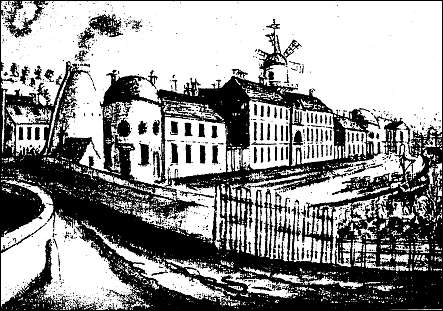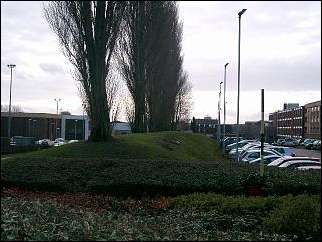|
Growing population &
industry:
If we fast-forward to 1785 we would find
that despite all the difficulties, the dawning Industrial Revolution was
drawing people in from the countryside, and the population had grown to
15,000 for the area, and to 4,500 for Hanley and Shelton. Small
cottage-potteries were being superseded by new brick-built and
tile-roofed manufactories, with the consequent demand for housing, goods
and services, the brick-making industry not lagging far behind the
potteries and coal mines. Our traveller, now elderly, could be walking
the same route as in 1750, perhaps this time accompanied by his small
grandson, musing on the throngs of people who seemed to be everywhere,
and on the latest visit to the area by Mr John Wesley who had last year
preached at Handley Green, breathing fire and Dissension.
The canals:
Being a staunch member of the Established
Church, hence his frequent journeys to the Parish Church of St Peter ad
Vincula in Stoke, our Man disapproved of these new ideas, but as he
stepped along his way, he marvelled at the sight in front of him. Mr
Wedgwood's new Caldon Canal, opened about five years ago, lay in his
path. He paused on the hump-backed bridge to watch a horse-drawn barge
glide slowly but surely past, with a cargo of limestone from the
Moorlands hills away to the northeast. Wedgwood's engineer, James
Brindley had designed the canal along the brow contour of the
shallow escarpment that encircled Shelton and Handley Green, so that on
the level it required less locks. The Caldon Canal was supplied with
water from man-made lakes and conduits up in the hills. Wedgwood's major
project, the Grand Trunk Canal of which the Caldon Canal was but an
arm, had been started in 1769 and was opened in 1777, connecting the
River Trent with the River Mersey through the Harecastle Tunnel.
From this point in history the only way was
forward. Even before 1769, Wedgwood had opened his new pottery at
Etruria on the line of the new canal. Other potters as well as his
engineer James Brindley scrambled to buy land and to relocate on or
near this new marvel. The canals needed good road links, and road
building was improved at the same time thanks to the enterprise and
diligence of men like John Metcalf (Blind Jack of Knaresborough) whose
methods soon became widely used.

The
Wedgwood factory from the canal bridge at Etruria Road in 1794
We had left our travellers on Caldon
Canal bridge, looking down towards Stoke. Their onward journey would be
largely unchanged in this predominantly agricultural environment, but
new building especially ribbon development along the highways was
becoming noticeable. On the way to church when crossing Winton's Field
they stopped to dabble in the small man-made channel that ran from the
Trent near Trent Hay Farm, to the Grand Trunk Canal in Stoke. This feeder was the first contribution of water from the river to the
canal that would one day bear its name- the Trent and Mersey.

The line of the canal
feeder
As they crossed the Grand Trunk Canal they saw a much busier waterway
than the Caldon with wharves and loading docks in both directions; a
veritable hive of activity. Sadly James Brindley died in 1772 and did
not see the completion of his last enterprise.
Stoke Church was even more dilapidated than
ever, and Grandfather was of the private opinion that it was in danger
of falling down. The Domesday Survey had valued it at 10 shillings.
 on
Domesday on
Domesday
  
next: railways and chartists
previous: the early years - 1750 onwards
|
![]()
![]()
![]()